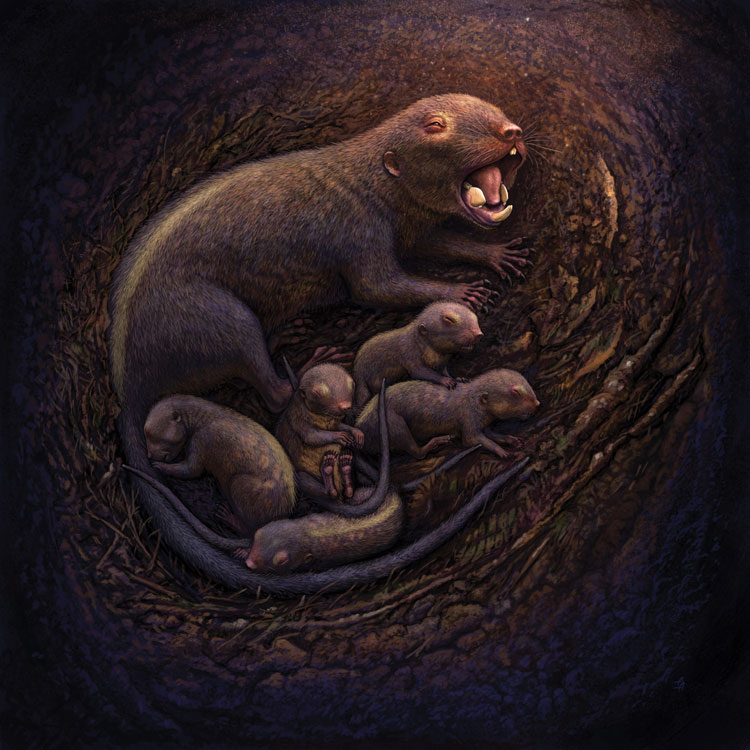
The winner of the 2023 ASN Presidential Award, chosen from among all of the papers published in the American Naturalist in 2022, is “Multituberculate Mammals Show Evidence of a Life History Strategy Similar to That of Placentals, Not Marsupials” by Lucas Weaver, Henry Fulghum, David Grossnickle, William Brightly, Zoe Kulik, Gregory Wilson Mantilla, and Megan Whitney. This paper skillfully weaves together multiple lines of inference to inform an important question in the evolutionary history of placental mammals: Did their life history enable their evolutionary success?
The placental life history strategy of having a long gestation period and relatively precocial young has been thought to be an evolutionary innovation that was critical in allowing the eventual predominance of placentals among mammalian taxa. Although this view has been challenged by some recent lines of evidence suggesting that the marsupial life history strategy of long lactation periods may be derived rather than ancestral, the question still remains open. Fossils from ancestral therian groups could lend evidence to this debate, but the life history of such groups was unknown. In this impressive study, Weaver et al. were able to infer the life history of the multituberculates, a highly successful clade of early mammals which had radiated broadly long before placentals, but which went extinct in the latter part of the Eocene.
To make this inference, Weaver et al. first explored the bone histology of placentals versus marsupials, convincingly showing that there were both diagnostic proportions of layers of different types of bone that tended to differentiate these groups and a robust relationship between the proportion of one particular type of bone and weaning age. By comparing placental and marsupial bone cross-sections to those of multituberculates, Weaver et al. were then able to infer that multituberculates shared a placental-like life history. The ancestral placement of multituberculates to the clade including placentals and marsupials lends additional support to the possibility that the marsupial life history strategy is the derived one. It also makes it clear that the placental life history strategy was not exceptional, and cannot explain the success of placentals over multituberculates in mammalian evolutionary history. This impactful work is an excellent exemplar of the more evolutionary side of The American Naturalist, integrating multiple techniques and lines of evidence, from histology to life history to phylogeny.